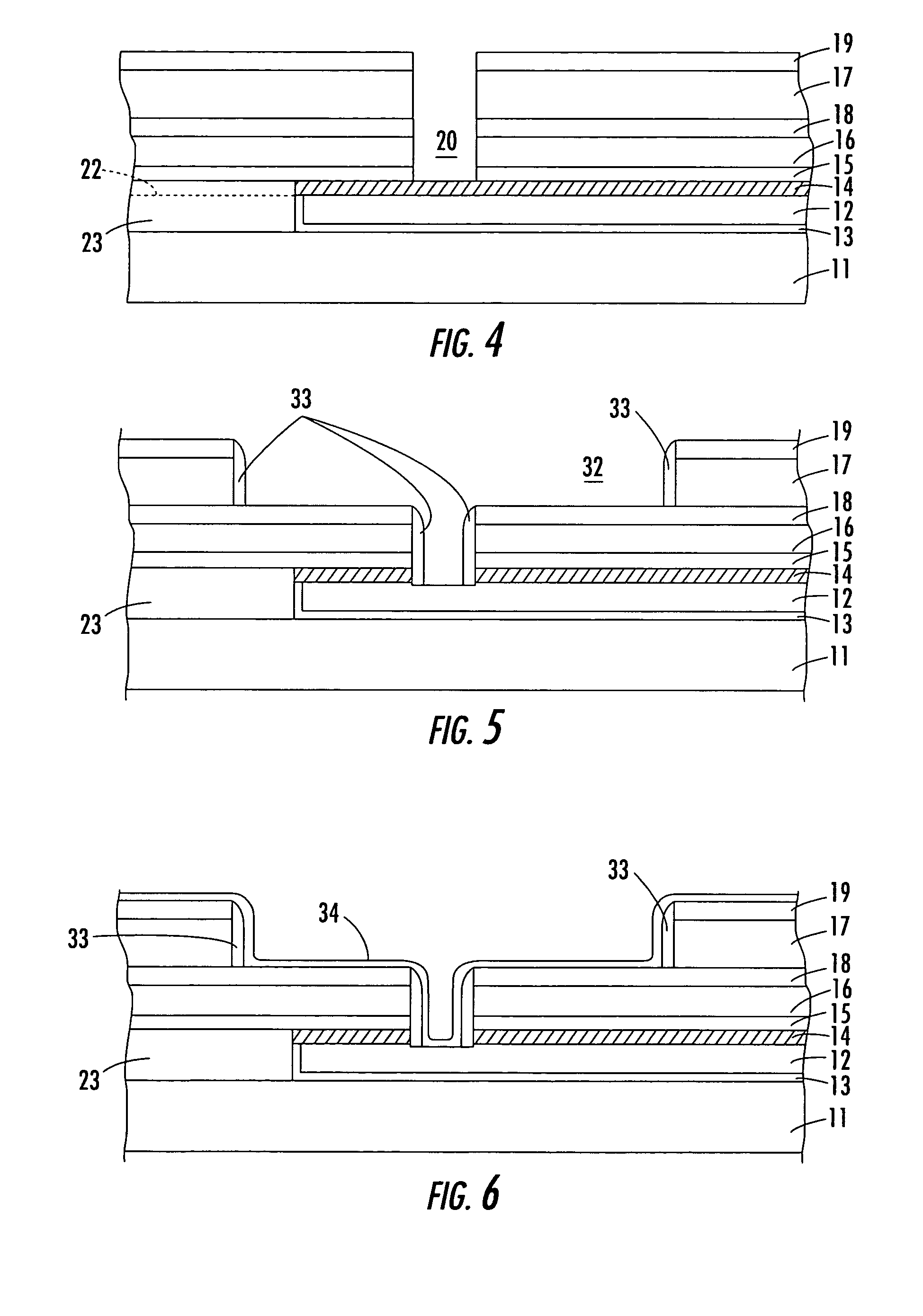Copper interconnect systems which use conductive, metal-based cap layers
a copper interconnect and metal-based cap technology, applied in the field of electromechanical devices, can solve the problems of inherently extremely difficult control of processes, degrade the electromigration resistance of the system, and none of the inventions disclose copper interconnect systems, so as to improve the resistance against electromigration (em), reduce the use of high dielectric insulators, and enhance the adhesion or interfacial bonding
- Summary
- Abstract
- Description
- Claims
- Application Information
AI Technical Summary
Benefits of technology
Problems solved by technology
Method used
Image
Examples
first embodiment
[0014]The following first embodiment is directed to improving the various weaknesses of prior art copper interconnect technology as discussed in detail above. These include weak bonding of the copper interconnect at the various interfaces present. Among various improvements, this invention teaches the use of certain metals and alloys to improve the bonding. This results in greatly reduced interface diffusion rates. This improves EM resistance, and reduces stress induced migration failure rates.
[0015]Referring to FIG. 1, a first Damascene-type interconnect comprising copper 3 is formed in an SiO2 or low-k type insulator 1 that, in turn, is on or adjacent a substrate 30. A liner 4 is formed by PVD, CVD or by (atomic layer deposition) ALD or by other methods, of Ta, Ta / TaN, Ta / TaN / Ta or other combinations thereof, or, for adhesion enhancement, an alloy or mixture comprising Ti added to Ta, Cr, Mo, W, Rh, Ru or Re—such alloys yielding improved adhesion to copper based metal 3. The barri...
second embodiment
[0021]Referring now additionally to FIGS. 4–6, a second embodiment provides a conductive coating or cap layer on the copper interconnect surface for the purpose of interface diffusion rate reduction. The coating is not a robust diffusion barrier, and for that reason it is covered by a dielectric diffusion barrier. The coating is etchable in halide-containing anisotropic plasma etching chemistries (RIE), and may be removed so that overlying copper vias may make a more direct copper-to-copper connection. This aids the prevention of copper flux divergence at the base of a via, a phenomenon which tends to reduce EM resistance. This embodiment also has no substantial diffusion barrier thickness remaining at the base of copper vias.
[0022]Following FIG. 4, a copper based interconnect 12 is formed over substrate 11 by a damascene-type process. The trench is lined with diffusion barrier 13 as described in the first embodiment above. The film 23 below the dashed line 22 is an insulating layer...
PUM
 Login to View More
Login to View More Abstract
Description
Claims
Application Information
 Login to View More
Login to View More - R&D
- Intellectual Property
- Life Sciences
- Materials
- Tech Scout
- Unparalleled Data Quality
- Higher Quality Content
- 60% Fewer Hallucinations
Browse by: Latest US Patents, China's latest patents, Technical Efficacy Thesaurus, Application Domain, Technology Topic, Popular Technical Reports.
© 2025 PatSnap. All rights reserved.Legal|Privacy policy|Modern Slavery Act Transparency Statement|Sitemap|About US| Contact US: help@patsnap.com



